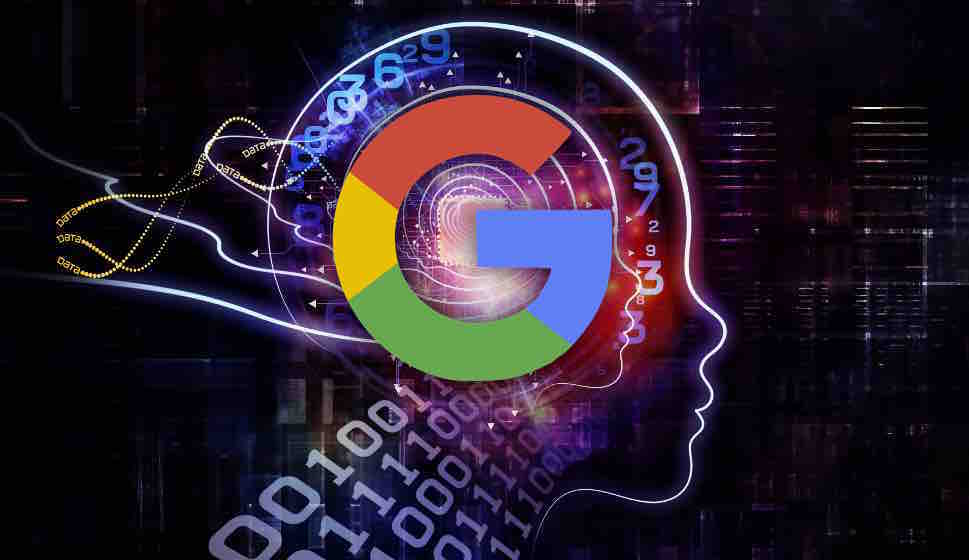
Throughout the 2010s, AI applications became the most popular and commercially successful areas of computing. AI is now a common part of our day and is used in countless applications, such as search engines and recommendation systems. It is also used to create autonomous vehicles. AI applications include image labeling, facial recognition, and iPhoto. Video apps such as TikTok are also powered by AI.
Machine learning
Organizations use machine learning today to identify profitable opportunities in their business and avoid unknown risks. Machine learning algorithms are useful in many industries, such as healthcare providers and financial institutions. Machine learning algorithms are able to automate tasks and give insights in real time. This can help improve both the user experience and the company's. The capabilities of these algorithms have made machine learning an integral part of many industries, including the health care industry and the search engine.

Generalized intelligence
Concerns have been raised by the recent advancements in AI/robotics and concerns about generalized Intelligence. While we have seen fictional examples, H.A.L. has shown general AI. These fictional examples of general AI (H.A.L. However, AGI has been argued as the way forward by researchers and it is important that education keep up with this trend.
Chatbots
Chatbots could revolutionize the way businesses work. Email-based customer service and messages via email are losing popularity. Unlike a traditional human, chatbots can recognize emotions and provide personalized responses to users. Chatbots can now be used in any type of business environment thanks to AI. Businesses can develop chatbots that offer support and customer service 24 hours a days and are consistent across different devices. They can also collect valuable information about their target audience, and use this data to tailor a personal offer.
Data analytics
AI and big-data are becoming inseparable. Both big data, AI, and data analytics are becoming increasingly important to businesses. Without AI data would be useless, and it would be impossible to master data. Both technologies need each other to grow. Let's look at how AI can assist you in making smarter and more informed decisions. Let's first look at how AI helps you to understand big data.
Automate routine tasks
While AI's future is still undefined, it will likely impact our daily work. AI will make our jobs more dependent on data, information, and that will affect the future. For example, AI may not be able to replace humans for more complex or repetitive tasks. However, AI is expected to significantly increase the productivity of human workers, resulting in higher GDP and greater social and economic growth. Economists predict that AI will double the GDP of the United States to $3.7 trillion by 2030. AI benefits will not be equally distributed. Rural communities are likely to have the highest costs.

AI's impact on the social fabric
There are two ways to evaluate the impact of AI on society: look at the positive impacts it has had in companies and society; and, look at the negative effects it had on workers. AI's development has brought benefits to companies by increasing their output, reducing costs and increasing productivity. They also benefitted from AI's ability to improve customer knowledge and establish monopoly roles. The social impact of AI, however, is still largely unclear.
FAQ
What are the benefits from AI?
Artificial Intelligence is a revolutionary technology that could forever change the way we live. It is revolutionizing healthcare, finance, and other industries. It's predicted that it will have profound effects on everything, from education to government services, by 2025.
AI is already being used for solving problems in healthcare, transport, energy and security. As more applications emerge, the possibilities become endless.
So what exactly makes it so special? It learns. Computers can learn, and they don't need any training. Instead of teaching them, they simply observe patterns in the world and then apply those learned skills when needed.
It's this ability to learn quickly that sets AI apart from traditional software. Computers can read millions of pages of text every second. They can quickly translate languages and recognize faces.
Artificial intelligence doesn't need to be manipulated by humans, so it can do tasks much faster than human beings. It can even surpass us in certain situations.
Researchers created the chatbot Eugene Goostman in 2017. This bot tricked numerous people into thinking that it was Vladimir Putin.
This shows that AI can be extremely convincing. AI's ability to adapt is another benefit. It can also be trained to perform tasks quickly and efficiently.
Businesses don't need to spend large amounts on expensive IT infrastructure, or hire large numbers employees.
Why is AI used?
Artificial intelligence refers to computer science which deals with the simulation intelligent behavior for practical purposes such as robotics, natural-language processing, game play, and so forth.
AI can also be referred to by the term machine learning. This is the study of how machines learn and operate without being explicitly programmed.
AI is being used for two main reasons:
-
To make our lives simpler.
-
To do things better than we could ever do ourselves.
Self-driving vehicles are a great example. AI can take the place of a driver.
Which countries are leaders in the AI market today, and why?
China is the leader in global Artificial Intelligence with more than $2Billion in revenue in 2018. China's AI industry includes Baidu and Tencent Holdings Ltd. Tencent Holdings Ltd., Baidu Group Holding Ltd., Baidu Technology Inc., Huawei Technologies Co. Ltd. & Huawei Technologies Inc.
China's government is heavily involved in the development and deployment of AI. China has established several research centers to improve AI capabilities. These include the National Laboratory of Pattern Recognition and State Key Lab of Virtual Reality Technology and Systems.
China also hosts some of the most important companies worldwide, including Tencent, Baidu and Tencent. All of these companies are currently working to develop their own AI solutions.
India is another country where significant progress has been made in the development of AI technology and related technologies. The government of India is currently focusing on the development of an AI ecosystem.
How does AI work?
An algorithm is an instruction set that tells a computer how solves a problem. An algorithm can be described as a sequence of steps. Each step has a condition that dictates when it should be executed. Each instruction is executed sequentially by the computer until all conditions have been met. This continues until the final results are achieved.
Let's take, for example, the square root of 5. It is possible to write down every number between 1-10, calculate the square root for each and then take the average. That's not really practical, though, so instead, you could write down the following formula:
sqrt(x) x^0.5
This is how to square the input, then divide it by 2 and multiply by 0.5.
This is the same way a computer works. It takes the input and divides it. Then, it multiplies that number by 0.5. Finally, it outputs its answer.
Is there another technology which can compete with AI
Yes, but not yet. There are many technologies that have been created to solve specific problems. However, none of them can match the speed or accuracy of AI.
From where did AI develop?
Artificial intelligence began in 1950 when Alan Turing suggested a test for intelligent machines. He stated that intelligent machines could trick people into believing they are talking to another person.
The idea was later taken up by John McCarthy, who wrote an essay called "Can Machines Think?" in 1956. He described in it the problems that AI researchers face and proposed possible solutions.
Statistics
- Additionally, keeping in mind the current crisis, the AI is designed in a manner where it reduces the carbon footprint by 20-40%. (analyticsinsight.net)
- While all of it is still what seems like a far way off, the future of this technology presents a Catch-22, able to solve the world's problems and likely to power all the A.I. systems on earth, but also incredibly dangerous in the wrong hands. (forbes.com)
- A 2021 Pew Research survey revealed that 37 percent of respondents who are more concerned than excited about AI had concerns including job loss, privacy, and AI's potential to “surpass human skills.” (builtin.com)
- More than 70 percent of users claim they book trips on their phones, review travel tips, and research local landmarks and restaurants. (builtin.com)
- In 2019, AI adoption among large companies increased by 47% compared to 2018, according to the latest Artificial IntelligenceIndex report. (marsner.com)
External Links
How To
How to build an AI program
Basic programming skills are required in order to build an AI program. There are many programming languages out there, but Python is the most popular. You can also find free online resources such as YouTube videos or courses.
Here's how to setup a basic project called Hello World.
First, you'll need to open a new file. For Windows, press Ctrl+N; for Macs, Command+N.
Then type hello world into the box. Enter to save your file.
To run the program, press F5
The program should display Hello World!
But this is only the beginning. If you want to make a more advanced program, check out these tutorials.